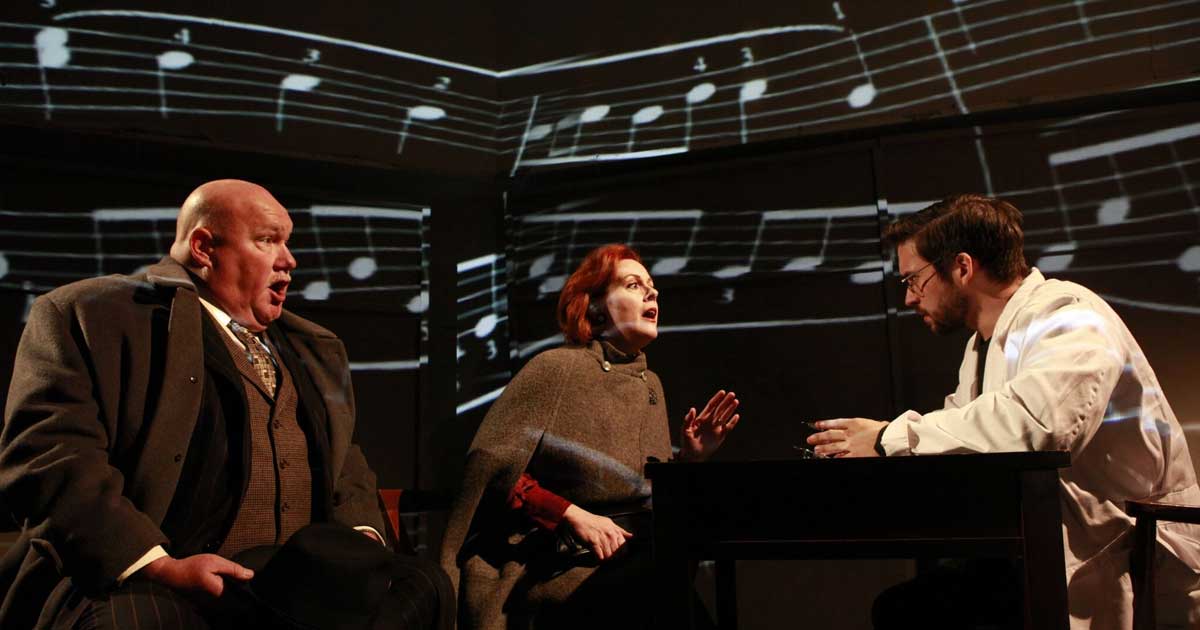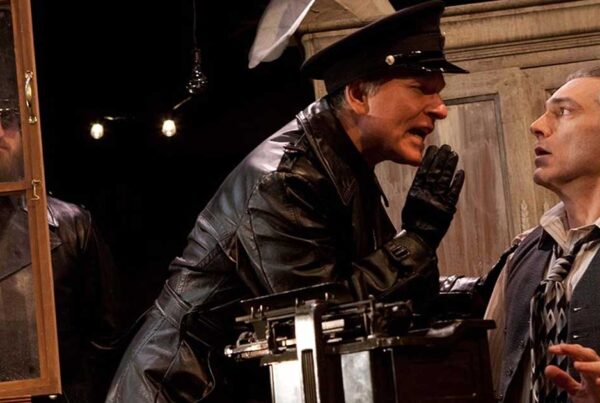
The Pittsburgh Tatler – Imagine what life would be like if you could see the shapes and contours and colors of things, but your brain could not organize those shapes and contours and colors into recognizable objects and people. Your vision would be in perfect order, but you would be effectively blind, incapable of making sense of the lines and patterns that make up the visual field.
That condition – called visual agnosia – is the subject of the title story from the late Oliver Sacks’s collection of accounts of neurological disorders, and also the focus of a chamber opera based on that book. The story is of a musician and professor of music, Dr. P., who “loses touch with the concrete world” and starts making the kinds of mistakes that one would make if one could not distinguish one object from another – like reaching for his wife’s head when trying to grab his hat. Sacks’s achievement with his writing lies not just in his fascinating and detailed accounts of the strange neuropsychological conditions that he’s encountered in his career, but also in his empathetic and wholistic approach to his patients as people. In his writing, he tries both to imagine his way into his patients’ lives, and to see them defined not by their deficits, but by the qualities that continue to make their lives rich and full despite their disorders.
The operatic version of the tale aims for the same effect, and the Quantum production, under Karla Boos’s direction, does an even better job of putting us into Dr. P.’s shoes than Sacks’s prose account. A good deal of the credit for that goes to projection designer Joe Seamans, who effectively uses visual imagery to help us see what Dr. P. sees (or, at times, fails to see), and whose projection design expands and contracts the boundaries of the small space, providing a visual analogue to Dr. P’s confused perception of the world. But it’s in the hands of the terrifically gifted cast – Ian McEuen as Sacks, Katy Williams as Mrs. P., and the magnificent Kevin Glavin as Dr. P. – to convey the capaciousness of character that inspired Sacks in this case and to show us that a devastating loss of neurological function can be both a curse and a gift. Dr. P. copes with his inability to make sense of the world visually by relying on his “inner music” to keep him oriented among the objects and people he can no longer distinguish visually, and Glavin embodies this aspect of the character beautifully, embodying a man who takes happy, innocent refuge in the both the abstract thinking still available to him and in his continued musical ability as he hums, in a childlike manner, while walking home or taking his tea.
The opera itself is, like Sacks’s tale, concise and economical – just seventy minutes long, with none of the repetition of lyrics typical of an opera libretto. The forward energy of the tale is underlined by the music, which often has an insistent, driving beat under the vocal line, giving the action a sense of both urgency and suspense. The space – a converted storefront on Highland Avenue in East Liberty – is likewise compact, with a spare set by Britton Mauk serving mainly as a backdrop for Seamans’s projections; conductor Andres Cladera and his small orchestra overlap with the set (they share a piano!), and, as always, Claderas masterfully balances the sound of the orchestra and the actors’ voices.
The Man Who Mistook His Wife for a Hat makes an operatic argument for the potential of music as neurological therapy, and concludes with Sacks’s typical embrace of disability as a different kind of ability. The patient asks Sacks to tell him what is wrong with him, and Sacks – no Dr. House – replies that he can’t tell him what’s wrong, but he can say what he finds right. “You are a wonderful musician, and music is your life…. Music has been the center, now make it the whole, of your life.”




